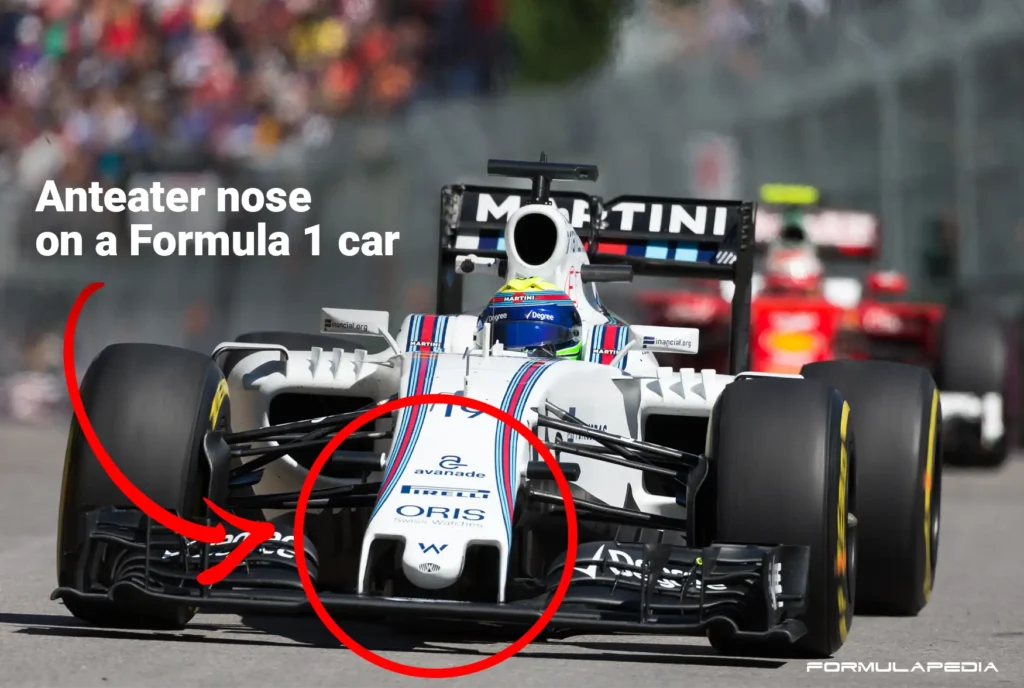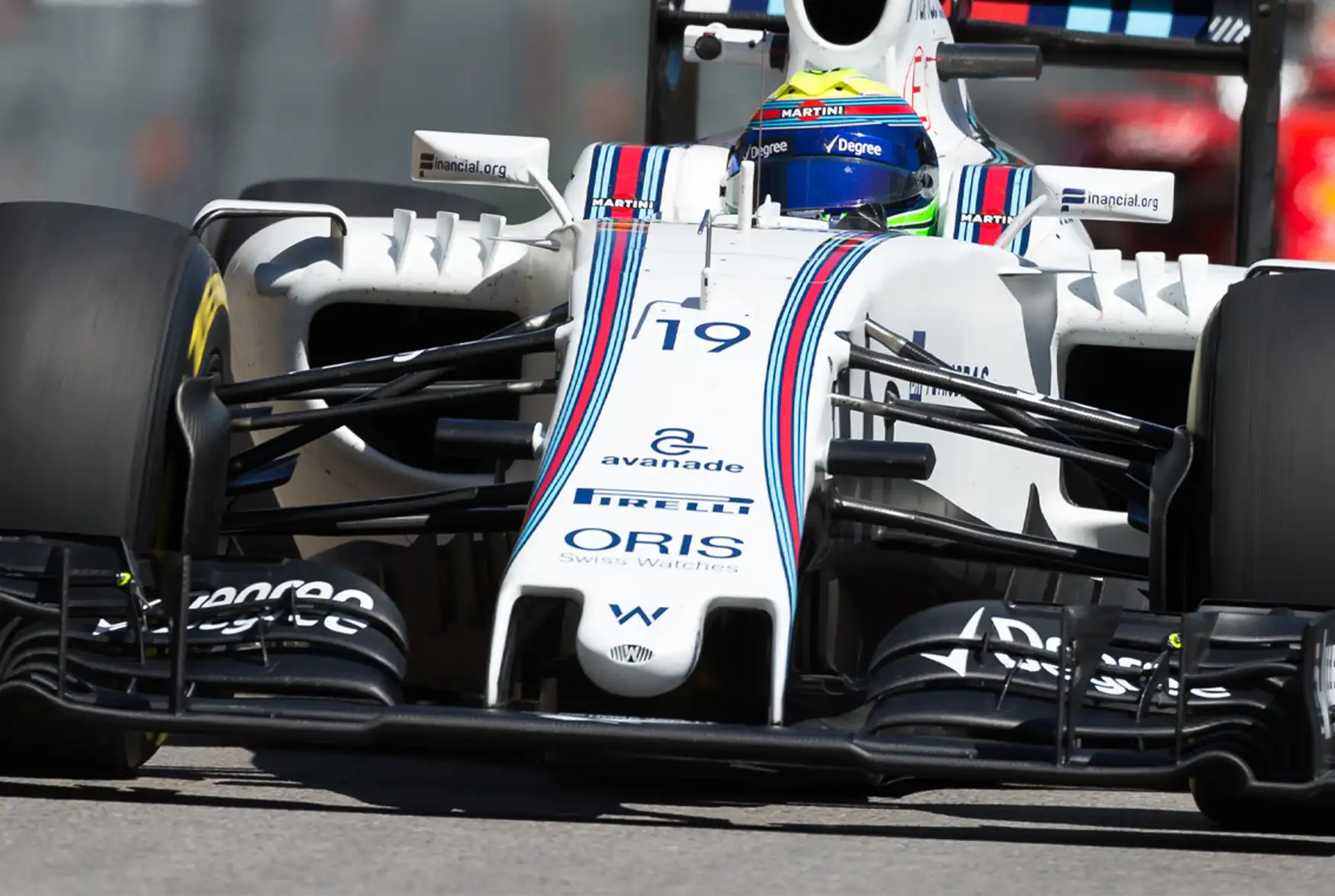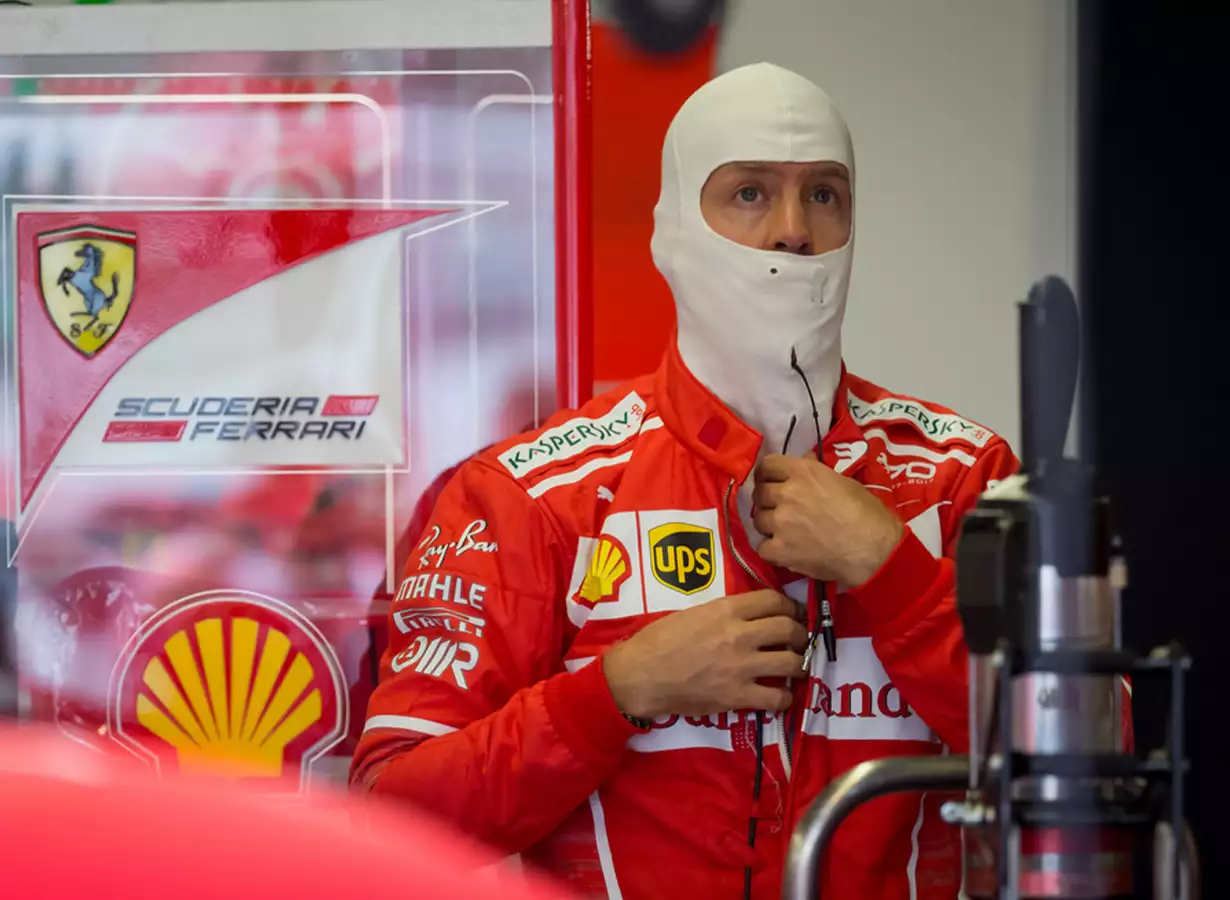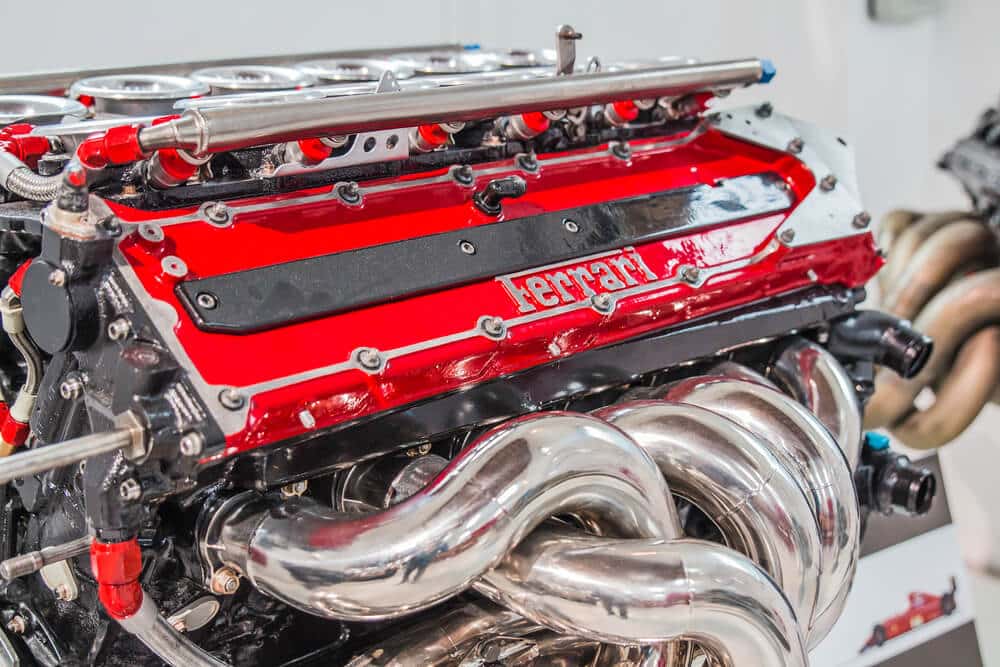Anteater is a unique nose design that was first introduced in the 2014 Formula One season. The idea came from the potential of slim, drooping nose tip extensions projecting from a higher, more substantial part that would pass crash testing and match teams’ aerodynamic goals.
But what exactly is an anteater nose, and why was it introduced in the first place?
In this blog post, we’ll take a close look at the anteater nose and try to understand its purpose.
Table of Contents

What is anteater in F1?
The term anteater refers to the somewhat ugly noses of 2014 Formula One cars, which were all required to follow new safety regulations. For better airflow under the car, the new F1 regulations required a relatively small nose tip cross-section to prevent cars from taking flight.
The result was the development of a new nose design, which resembles the long and pointy nose of an anteater. While the new nose design may not be aesthetically pleasing, it was introduced for a purpose. The anteater nose was designed to improve the flow of air around the car, which ultimately results in better performance.
Williams was the first team to experiment with the anteater nose design which was followed by other teams.
Key takeaways
Here are some key aspects that you should be aware of regarding anteater in F1:
- The anteater nose was introduced in 2014 due to new safety regulations.
- The anteater nose is designed to improve the flow of air around the car.
- The nose design may not be aesthetically pleasing, but it serves a purpose.
- The first team to experiment with the anteater nose was Williams.
Understanding anteater
Now that we know what anteater is, let’s take a deep look at anteater:
Why was the anteater nose introduced?
The 2014 F1 regulations featured a number of upgrades, most of which were around the new 1.6-litre turbo-charged V6, which replaced the original V8.
You’d be hard-pressed to find a season with more gasps and double takes than 2014. For a while, it seemed like the teams were trying to see who could make the most “aesthetically challenging” nose design of all time. However, it all changed when new rules came into place, which required teams to have a relatively small nose tip cross-section with the hope it would make cars less likely to take flight during an accident.
The new noses were given the name “anteater” because of their long and pointy shape, which resemble the nose of the animal.
Safety concerns
With the new, slimmer nose design came new safety concerns. Adrian Newey, the technical director of Red Bull and the most respected designer in Formula One, was worried about the safety of the new low nose, which was the most obvious sign of the major technological changes that happened in 2014.
The regulation has been introduced following some research by the FIA [the sport's governing body], which suggests that nose height reduces the chance of cars being launched [into the air] like the accident that Mark Webber had when he hit the back of Heikki Kovalainen in Valencia a few years ago.
There have been some accidents where you think would a low nose possibly have made things much worse? There was the accident a few years ago where Michael Schumacher spun at the first corner and somebody mounted him. Would a low nose have made that worse?Adrian Newey, Technical director of Red Bull
Similarly, Red Bull’s team principal, Christian Horner, when asked to comment on Newey’s observations, added:
Adrian has never been a fan of this nose concept of torpedoing a car underneath another rather than going over the top
Do F1 cars still use the anteater nose?
No, F1 car doesn’t use anteater noses anymore. In recent years, teams have slowly started to move away from the anteater nose design and towards a more traditional nose shape.
This is likely due to a number of factors, the most important of which being that the FIA has relaxed the rules regarding the minimum cross-section of the nose. This has given teams more freedom to experiment with different nose designs, which has ultimately led to the abandonment of the anteater nose.
As of 2022, F1 cars have a narrow nose, generally with an s-duct sucking air from below the nose between the front wing pillars using the low-pressure area of the front.
Conclusion
So there you have it, everything you need to know about the anteater nose in Formula One. It’s a nose design that was introduced due to new safety regulations but has since been abandoned in favour of more traditional nose shapes. Next time you watch a Formula One race, keep an eye out for the different nose shapes and see if you can spot an anteater.
Learn more about Formula One
Want to learn more about F1? Then visit our Formula 1 glossary and dictionary.




